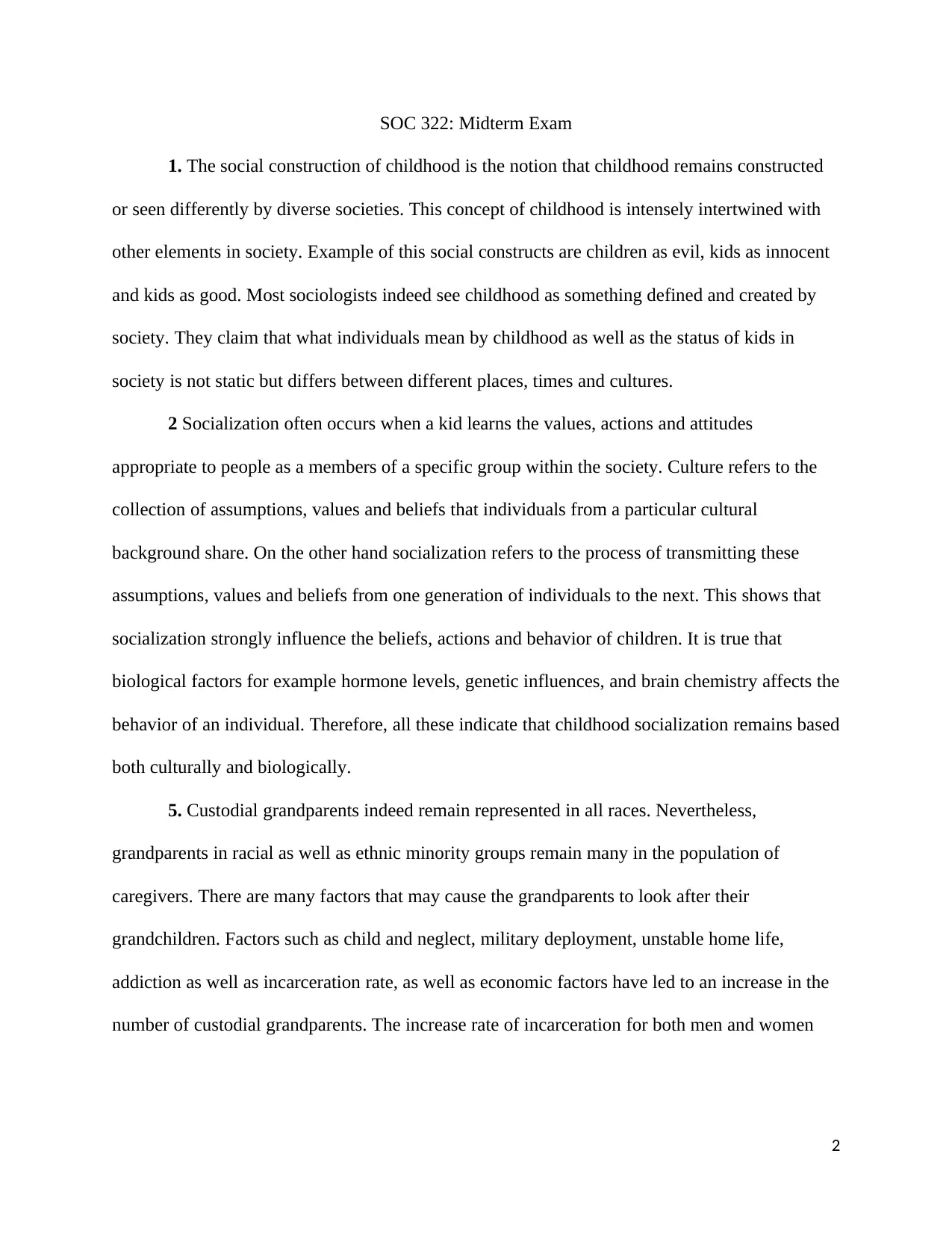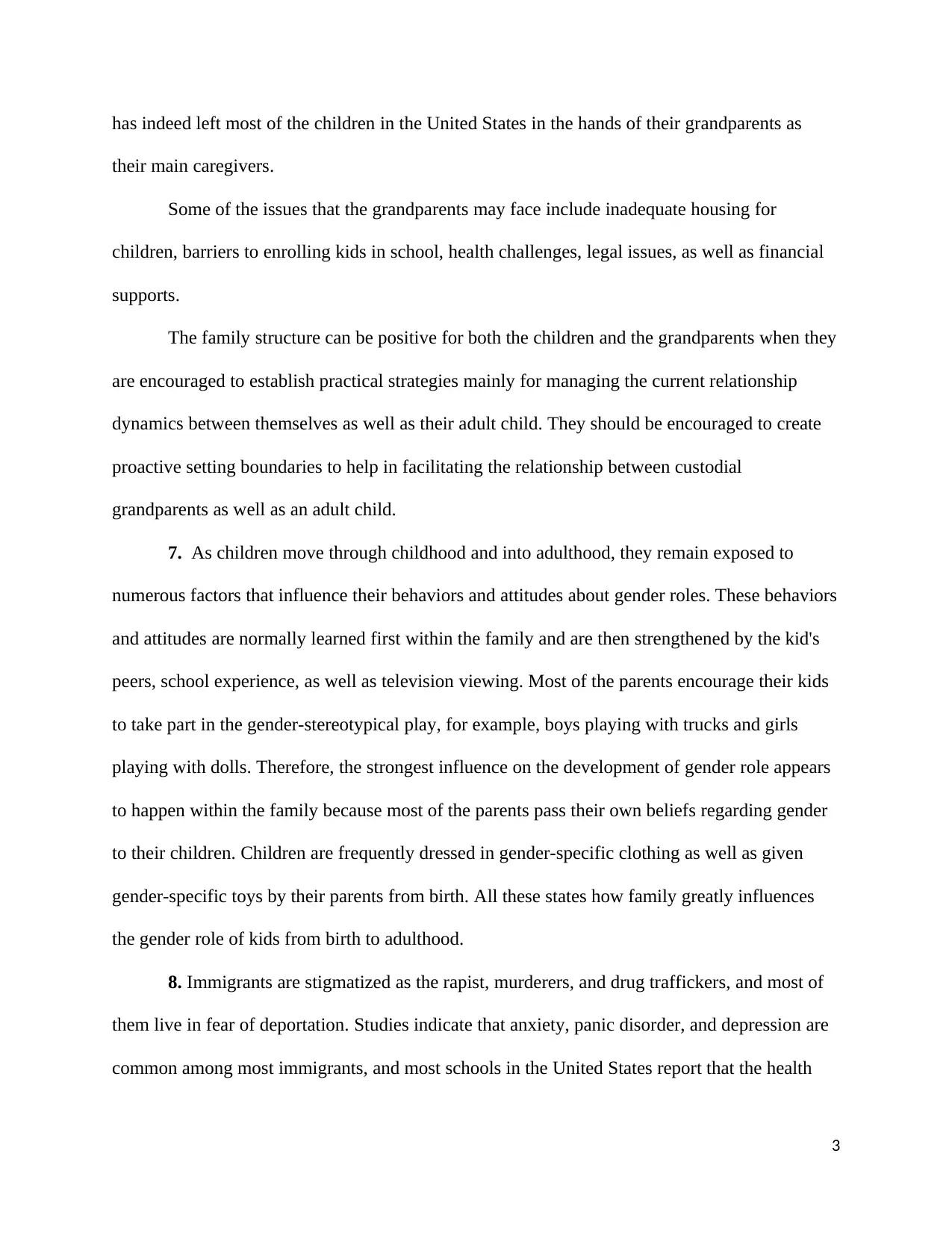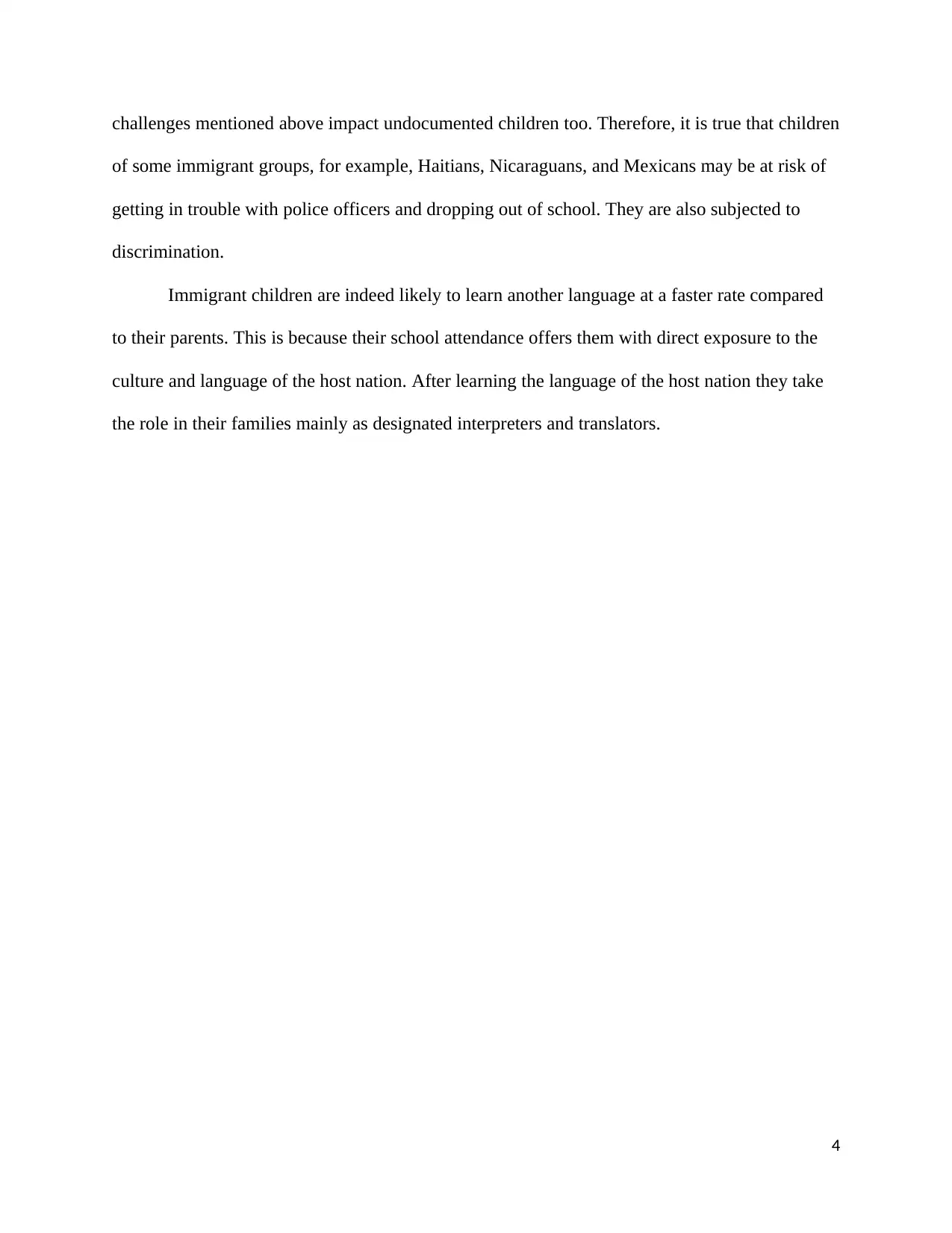SOC 322: Midterm Exam Solution: Examining Childhood in Society
VerifiedAdded on 2022/08/22
|4
|769
|20
Homework Assignment
AI Summary
This document presents a solution to a midterm exam for SOC 322, focusing on the sociological study of childhood. The exam explores the concept of childhood as a social construct, examining how different societies perceive and define it. It delves into the interplay of biological and cultural factors in childhood socialization, and it analyzes the rise of custodial grandparents and the challenges they face. The solution also discusses the influence of family, peers, and media on the development of gender roles, and it addresses the experiences of immigrant children. Furthermore, it examines how socioeconomic changes impact childhood experiences compared to previous eras, and compares and contrasts means-based and age-based social programs. The solution provides comprehensive answers to the exam questions, offering insights into various aspects of childhood within a sociological framework.
1 out of 4











![[object Object]](/_next/static/media/star-bottom.7253800d.svg)